How is the trekking journey to Everest Base Camp?
The Everest region has offered trekkers and mountaineers unparalleled memories from many years ago, and the legacy of Everest continues to captivate people themselves. The Everest Base Camp Trek stands as one of the most sought-out regions among the Himalayas to explore. Situated on the southern side at an altitude of 5,364 meters, approximately 40,000 adventurers embark on this journey every year. The scenic beauty of Everest Base Camp is one of the most aesthetically and mentally pleasing adventures to embark on.
Everest Base Camp trekking is a picturesque and beautiful experience that offers a unique blend of physical challenge and majestic natural beauty. Everest Base Camp Trek leads you on an adventure full of panoramic views of the mountain with unbelievable scenes of snow-capped peaks, lush greenery, and serene landscapes. We can understand the active lifestyle and conventional culture of the local people on the route, mostly Sherpas.
That's not all; the Everest Base Camp trek takes you to many notable landmarks at higher altitudes. The trek's highest point is Kala Patthar, which lies at a whooping elevation of 5644 m and lies further beyond Everest Base Camp. Simply no words can describe standing on these lofty peaks and witnessing the highest peak of the world, Mount Everest. The moment you spend there will undoubtedly be the most magical experience of your lifetime.
Introduction of the Base Camp of Mount Everest Excursion
The Everest Base Camp Trekking, which is located in the heart of the Khumbu region of Nepal, stands as a hotspot for adventure seekers worldwide, beckoning them to embark on a journey of a lifetime amidst the breathtaking landscapes of the Himalayas. This trek is a harmonious blend of breathtaking natural beauty and the vibrant Sherpa culture, promising an unforgettable adventure for travelers venturing into the heart of Nepal's mountainous terrain.
Traversing through this dazzling landscape, trekkers are treated to an environment full of diverse ecosystems, each offering a unique charm and allure. From verdant forests teeming with diverse flora and fauna to jagged mountain passes beautified with glaciers, every step of the journey unravels a new segment of Mother Nature's beauty. And looming majestically above it all stands the towering peak of Mount Everest, casting its spell over all who dare to embark on the peak.
Accommodation along the Everest Base Camp Trek primarily consists of top-class teahouses strategically located along the trek. These cozy places will offer weary trekkers a warm and inviting refuge, complete with comfortable lodging and hearty food to fuel their mountainous adventures. Despite their humble faces, these teahouses exude an authentic Himalayan charm, which helps provide trekkers with a true taste of Sherpa hospitality.
Speaking of tastes, the culinary delights found in these teahouses are a highlight of the trek itself. Trekkers are treated to a gourmet journey through Nepali Himalayan cuisine, with hearty dishes made from fresh, locally sourced ingredients. From bowls of dal bhat to savory momos and hearty Sherpa stews, every meal is a celebration of flavor and tradition, nourishing both body and soul.
What food and accommodation options are available when trekking to the base of Mount Everest?
There are a number of lodges and restaurants that provide meals to trekkers. These restaurants and lodges provide a variety of local and international dishes, including rice and lentils, noodles, soups, dumplings, fried rice, pasta, and much more. Not only that, vegetarian and non-vegetarian options are usually available, which can satisfy the customer’s needs. The lodges that provide meals are also places that provide high-quality accommodation. The sites of accommodation provide the customers with beds and blankets, but it is also recommended to bring a sleeping bag to increase the warmth. There is also the availability of modern utilities like internet and electricity in most of the places along the route.
What are the risks associated with altitude sickness on an Everest Base Camp trekking adventure?
The Everest Base Camp Trek is one of the most demanding journeys to complete in the entirety of Nepal, if not the world. This trek requires more than just the desire to explore. Participants should possess strong physical fitness and endurance. The trail traverses a rugged landscape filled with steep, rocky terrain that will test your limits. Even the weather in the Everest region can be incredibly harsh and cruel at times, mostly at higher elevations. Trekkers may encounter extreme cold temperatures, strong winds, snowstorms, and icy conditions, especially during the winter and shoulder seasons. Such harsh weather conditions can cause the trekker’s health to deteriorate, which can cause the entire journey to be a gloomy adventure. Additionally, some areas during the trek lack access to the internet. This can cut off the only means of information in the modern world, so it can be a burden. This trek will require meticulous planning. But our team can help turn this strenuous trek into a joyful one. Thus, proper preparation and guidance are key to successfully completing this challenging trek.
To avoid altitude sickness during the trek, do the following things:
- Drink plenty of water
- Do not smoke or drink alcoholic substances
- Take plenty of rest and eat nutritious food
- Maintain your pace
How does the altitude profile change as you ascend to the Everest hiking trail?
The Everest Base Camp Trek is a challenging trek with the requirement of the ability to conquer altitude change. The adventure starts in the Kathmandu Valley, which has an altitude of around 1400 meters. Then the next place will be Lukla with an altitude of 2800 meters or Phakding with an altitude of 2610 meters, followed by Namche bazar at an altitude of 3441 meters. After reaching Namche Bazar, there are Tengoche, Dingboche, and Lobuuche with altitudes of 3860 meters, 4350 meters, and 4910 meters, respectively. After reaching these milestones, you will reach Everest base camp at a height of 5365 meters, followed by Kalapatthar at approximately 5555 meters. Despite the challenges of the altitude, the trek offers an unforgettable experience of the stunning landscapes of the Everest region. And it is worth a visit by mountain lovers, enthusiasts, or anyone in general.
Why choose Nature Excursion Pvt. Ltd. for the trek to the base of Mount Everest?
While selecting Nature Excursion Pvt. Ltd., you unlock a treasure trove of advantages. Not only do we offer competitive costs, but we also deliver genuine value for every penny you invest and the trust you place in us. Our meticulously organized trips are led by seasoned experts—guides with over 15 years of experience navigating the Himalayas of Nepal. We and our team possess a wealth of knowledge, from eloquent communication and friendly demeanor to an intimate understanding of the terrain, routes, majestic peaks, local culture, and cherished traditions. Most importantly, they share a warm camaraderie with the locals, ensuring an authentic and enriching journey. With us, your adventure transcends mere trails; it becomes a symphony of discovery and connection.
Some of the benefits you will get from joining us during the Everest Base Camp Best Itinerary are:
- Free airport pick-up and drop-off services
- Complementary farewell dinner
- Company t-shirt and certificate
- 24/7 available
- Professional and expert mountain leader
- Down jacket, duffel bag, and sleeping bag (returnable)
- Free storage of extra luggage at Kathmandu
- Oximeter and first-aid kit during the trek
- No hidden cost or policy



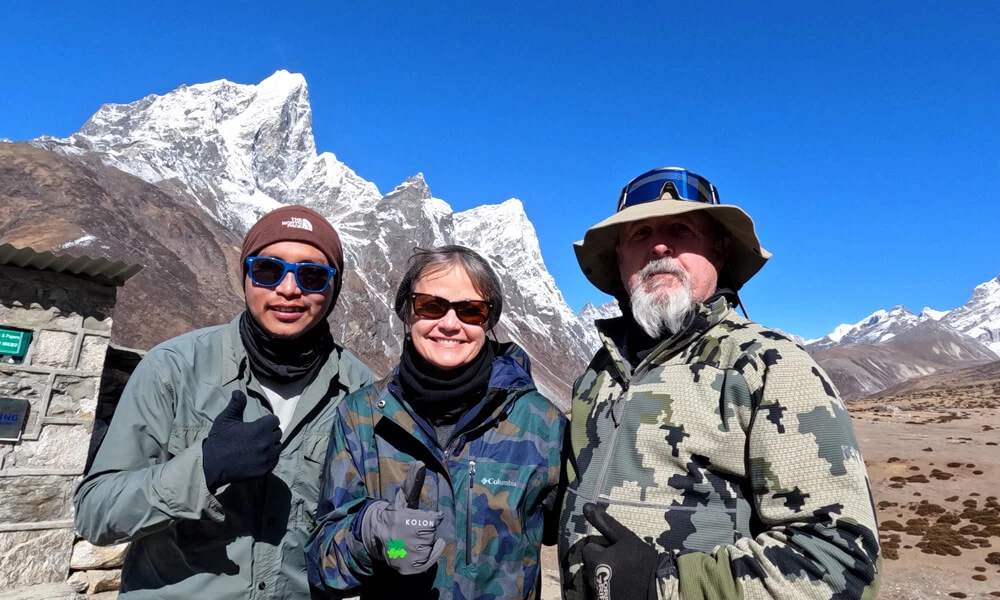
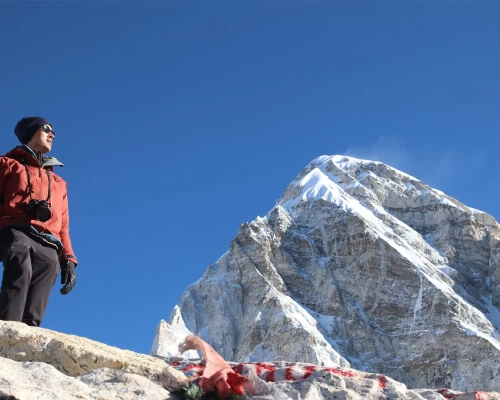
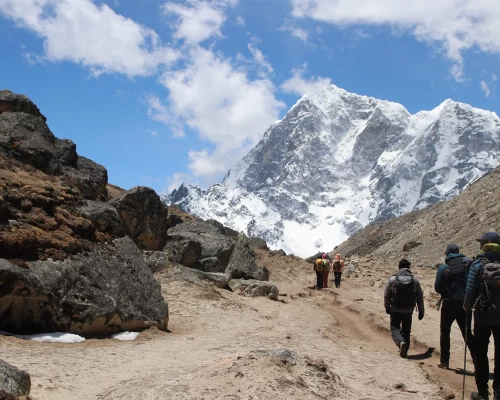

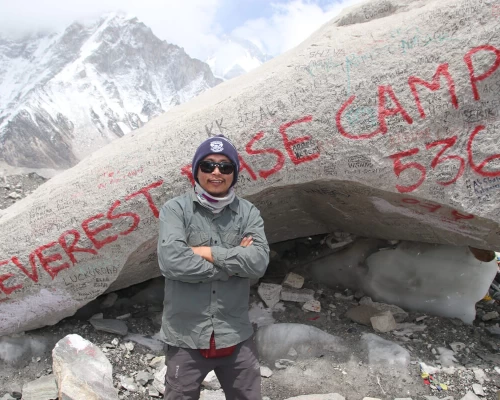
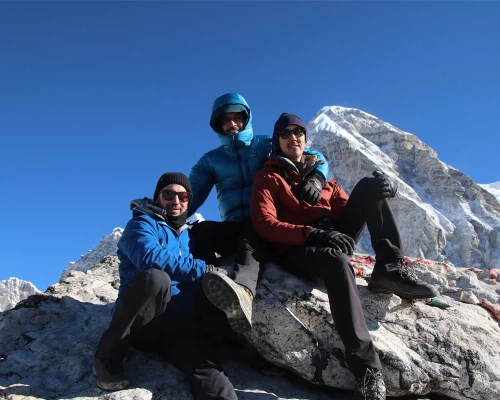
-(1).webp)


